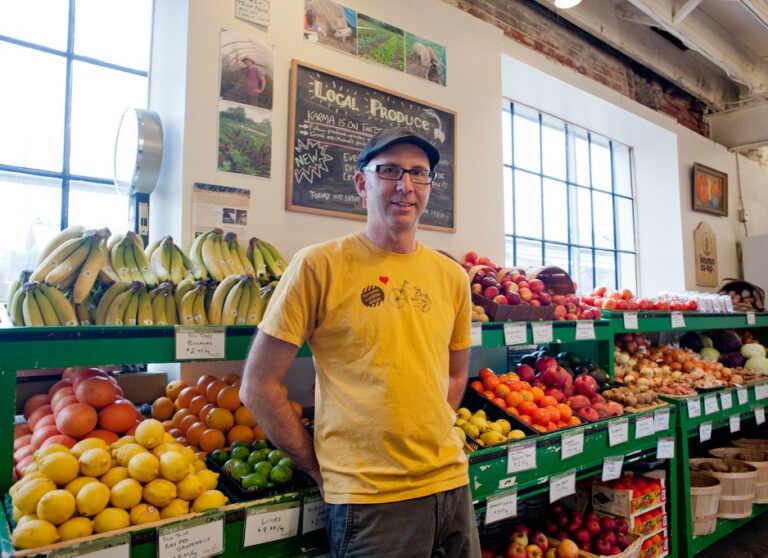Ten Tips From A Shaolin Monk On How To Stay Young Forever
People always say health is the most important thing but how many people live by this belief? We need to start today. In order to help us stay on the path to health I have translated an extract from one of the Shaolin Classics. Written by a monk who was a great martial artist and scholar, here he gives advice to lay people as to how to stay young and healthy.
Ten Tips From A Shaolin Monk On How To Stay Young
1)
Don’t think too much. Thinking takes energy. Thinking can make you look old.
2)
Don’t talk too much. Most people either talk or don’t. Better to don’t.
3)
When you work, work for 40 minutes then stop for 10 minutes. When you look at something all the time, it can damage your eyes and also your internal organs and peace.
4)
When you are happy, you need to control your happiness, if you lose control then you damage your lung energy.
5)
Don’t worry too much or get angry because this damages your liver and your intestines.
6)
When you eat food don’t eat too much, always make sure you are not quite full as this can damage your spleen. When you feel a little hungry then eat a little.
7)
When you do things, take your time, don’t hurry too much. Remember the saying “Hasten slowly you will soon arrive.”
8)
If you only do physical exercise all the time and you never do Qigong this makes you lose your balance and you will become impatient. You lose the Yin of your body. Exercise & balances, the Yin and the Yang.
9)
If you never exercise, just peace, meditation, soft training, Qigong, then you will loose your Yang energy.
10)
Shaolin Gong Fu gives you everything. The purpose of our training is to balance our Yin and Yang. How many hours is not important. It’s down to knowing what your body needs.
About the Author
Shifu Yan Lei is a 34th generation Shaolin Gong Fu Master. Visit his blog here, and you can sign up to his newsletter, monthly training tips and archives. He also offers DVDs and meditative aids.
Image Credits: pxleys
Credits: By: Shifu Yan Lei
Johnny Depp Intends To Buy Indian Reservation And Gift It Back To The Native American People
Actor Johnny Depp wants to purchase the historical landmark Wounded Knee and gift it back to the Native American people to help make right what went so wrong in 1890. by Amanda Froelich
In an interview with The Daily Mail on Sunday, well-known actor Johnny Depp disclosed that he intends to buy Wounded Knee, a national historic landmark, and gift it back to the Indian people. He shared that he is ready to spend millions in order to give control back to those that should have inherited the land, and help make right what went so wrong back in 1890.
“It’s very sacred ground and many atrocities were committed against the Sioux there,” he said. “And in the 1970s there was a stand-off between the Feds (Federal government) and the people who should own that land. This historical land is so important to the Sioux culture and all I want to do is buy it and give it back. Why doesn’t the government do that?“
Perhaps it was Depp’s stint playing the role of Tonto in the box office production The Lone Ranger that inspired him to pursue such action; whatever the inspiration, the activism will most certainly be appreciated by many.
Depp spent a massive amount of time doing research about the various tribes and received the approval from many Native American groups before the filming of The Lone Ranger began. His respect for the Native American culture runs deep, and he wanted to make sure that all those involved with the production were doing right by “the Indian” in the way they portrayed the various tribes.
“The idea was to give back to them and to make sure that we got it right,” he said in the lengthy interview.
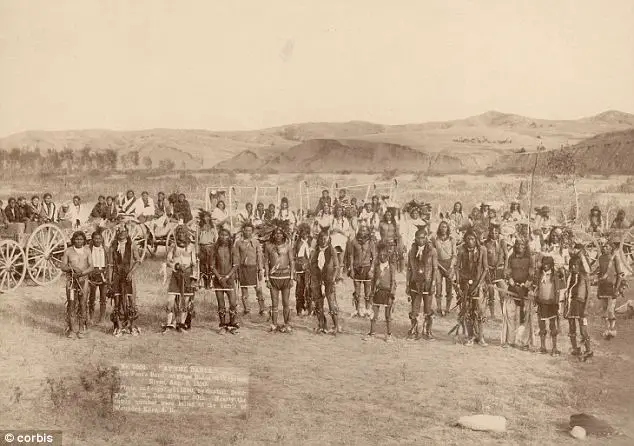 “This picture of the Miniconjou Sioux band was taken near the site of the Wounded Knee massacre one month before the December 1890 massacre where hundreds of Indians were killed.”
“This picture of the Miniconjou Sioux band was taken near the site of the Wounded Knee massacre one month before the December 1890 massacre where hundreds of Indians were killed.”
Credit: Corbis
According to the news source, Depp is intent on following through with the aforementioned plan. The asking price for Wound Knee is $3.9 million, which is a fraction of what Depp makes from one production. That said, there is little standing in the way of him keeping true to his promise.
“I am doing my best to make that happen. It’s land they were pushed on to and then they were massacred there. It really saddens me,” he stated.
The area near Wounded Knee Creek on the Lakota Pine Ridge Indian Reservation (in South Dakota) is where the last major battle of the American Indian Wars took place. The fight reportedly began when an elderly tribesman refused to hand over his weapon. Troops attacked, and at least 150 members of the Lakota tribe – including men, women, and children – were killed.
Honoring the Native American culture by purchasing the historical location will be a major step in helping to make right what went so wrong over a hundred years ago. The event has caused outrage from historians as at least 20 American soldiers were awarded the Medal of Honor for their role in the massacre. Now, at least, the public is more educated on the solemn history and can do what’s right moving forward.
What are your thoughts on this news? Comment below and share this article!
How To Turn Into A Tree After You Die: The End Of Cemeteries
We tend to think that there are only 3 main options for what we can do with our bodies once we die. We can either have it buried in a coffin, cremated, or donated to science. There is another option that is available now which completely shatters the traditions of our society and replaces them with a much more practical (and even spiritual) alternative. – Steven Bancarz

Bios Urn is a funerary urn made from biodegradable materials (such as coconut shell and cellulose) that will turn you into a tree after you die. Inside the urn there is a pine seed, which can be replaced by any other seed or plant, and will grow to remember your loved one. Instead of being buried in just another coffin in the ground, we can become part of a forest and give back to our environment.
When planted, the tree seed is nourished by and absorbs the nutrients from the ashes of your body which are contained inside. The urn itself is made from coconut shell and contains compacted peat and cellulose. The ashes are mixed with this, and the seed placed inside. You even have the choice to pick the type of plant you would like to become, depending on what kind of planting space you prefer. Once your remains have been placed into the urn, it can be planted and then the seed germinates and begins to grow.
How A Biodegradable Urn From Bios Works
1. The urn comes assembled and ready to be taken to the place chosen for the regeneration.
2. Remove the seal and the outer packaging of the urn.
3. Put the ashes in the urn’s lower part. Close it with the top part and put the soil with the seed in it.
4. Bury the urn in fertile soil with its top level with the soil surface and water it.
5. In a few days the seed will germinate and your tree will begin to grow.
6. The tree will continue to grow year after year.

I think its pretty cool that we have the option of replacing cemeteries (which usually feel lifeless and cold) with forests that are teeming with life. The cool thing is, they have bios urns available for your pets as well.
If you would like to contribute to a more sustainable world by purchasing a Bios Urn for yourself, a loved one, or a pet, or if would would like to learn more about them, you can do so by click HERE.
Source: UrnaBios.com
Costa Rica Powers 285 Days of 2015 With 100% Renewable Energy
In March, EcoWatch reported that Costa Rica powered the first 82 days of the year solely with renewable energy. Now that we’re closing in on the end of the year, the Costa Rican Electricity Institute (ICE) announced that the country ran entirely on renewables for 285 days between Jan. 1 and Dec. 17.
“We close 2015 with 99 percent clean energy!” ICE wrote on Facebook, saying that “the energy produced … in 2015 reaches 98.95 percent with renewable sources as of December 17.”
“We are closing 2015 with renewable electricity milestones that have put us in the global spotlight,” ICE electricity division chief Luis Pacheco told AFP.
The majority of the country’s energy (75 percent) comes from hydropower, thanks to a vast river system and abundant rainfall, and the rest of its renewables come from geothermal, biomass, wind and solar. Despite a very dry year, ICE said it was ahead of its renewable energy targets and Pacheco predicted that 2016 would be an even better year because a new $2.3 billion hydroelectric plant will be coming online.
The country reportedly wants to move away from its dependency on hydropower, though, and harness more of its electricity needs from geothermal and wind. It plans to retire its heavy fuel oil-powered Moin plant in 2017 and wants to move its transportation sector away from fossil fuels. The country has made all this progress, while reducing overall energy costs, which fell by 12 percent this year and the ICE expects costs to keep falling.
“The government has pledged to build an electric train which will be integrated with public buses,” Gabriel Goldschmidt, regional head of infrastructure for Latin America and Caribbean at the International Finance Corporation, which is part of the World Bank, told the Huffington Post. “There is also a proposal to start replacing oil-powered cars with electric cars as part of a new bill in congress that aims to offer consumer incentives to lower the prices of these cars. This would have multiple benefits including better air quality.”
Costa Rica’s heavy reliance on hydropower has been criticized by some. Gary Wockner of Save the Colorado argues that hydropower is actually “one of the biggest environmental problemsour planet faces” and a ” false solution” for addressing climate change.
“Hydropower has been called a ‘methane factory’ and ‘methane bomb’ that is just beginning to rear its ugly head as a major source of greenhouse gas emissions that have so-far been unaccounted for in climate change discussions and analyses,” Wockner said last month.
Still, the country is among the vanguard of nations around the world moving towards a 100 percent renewable energy future. Several countries have hit impressive benchmarks for renewables in just a few short years. And many places have already made the transition to fossil-fuel-free electricity. Samso in Denmark became the world’s first island to go all in on renewables several years ago. Most recently, Uruguay, three U.S. cities– Burlington, Vermont; Aspen, Colorado; and Greensburg, Kansas-along with Kodiak Island, Alaska, have all made the transition.
San Diego, Vancouver, Las Vegas and other major cities around the world have pledged to go 100 percent renewable. Sweden made headlines earlier this year when it pledged to be among the first countries to go fossil free. Hawaii pledged to do so by 2045-the most ambitious standard set by a U.S. state thus far. Several other islands, including Aruba, Belize, St. Lucia, Grenada, the British Virgin Islands, the Bahamas, Turks and Caicos, and San Andres and Providencia have pledged to go 100 percent renewable, through the Ten Island Challenge, created by Richard Branson’s climate group the Carbon War Room.
Greenpeace and researchers at Stanford and UC Berkeley have laid out plans for every state in the U.S. to adopt 100 percent renewables and a Greenpeace report published in September posits the world can achieve 100 percent renewable energy by 2050. Mark Jacobson, one of the researchers from Stanford, said the barriers to 100 percent clean energy are social and political, not technical or economic.
Just last week, Tesla CEO Elon Musk said in an interview that “You could take a corner of Utah or Nevada and power the entire United States with solar power.”
And, it looks as if the Paris climate conference earlier this month helped create market certainty in renewables, as fossil fuel stocks tumbled and renewable energy stocks soared. After the landmark Paris agreement was reached, the coal industry’s European lobbying association feared that the deal meant the sector “will be hated and vilified, in the same way that slave traders were once hated and vilified.”
Photo Credit: Brandon Watson
Bernie Sanders Vows to Protect Organic Farming, Calls Out Monsanto As Presidential Campaign Heats Up
Unlike most of the top candidates, Vermont senator Bernie Sanders has a long history of speaking out against big corporations, factory farming, and the Biotech giants. As early as 1994 he was fighting against companies such as Monsanto using chemicals that impact human and animal health. He was also one of the few senators that introduced the Farm Bill that would require labeling of any genetically engineered ingredients in food.
Unlike another candidate running on the democratic platform Hilary Clinton who fully supports GMOs, Sanders believes that the biotech companies are “transforming our agricultural system in a bad way.” He says that he stands for the right of the people to know what is in our food (through mandatory GMO labeling that he helped pass in Vermont, an effort that the GMO giants are trying to block through the DARK Act) and supports family-owned and organic agriculture.
During a private dinner event on December 27 th, Sanders spoke about how to make sure our food is healthy and our farming is ethical, as well as other big issues that his campaign stands for.
“The debate should be – how do we make sure that the food our kids are eating is healthy food. And having the courage to take on these huge food and biotech companies who are transforming our agricultural system in a bad way,”
– Sen. Bernie Sanders
He also goes off on the fossil fuel industry, saying it’s past due time we start to shift toward renewable and alternative energy.
Perhaps the most exciting part of his speech happens a few minutes in as he describes the food scene in his home state, where organic farming and farmer’s markets are becoming commonplace.

“We have hundreds of farmers markets (in Vermont), you’ll find people buying food, beef and poultry directly from farmers, and there’s a growing farm to school pipeline,”
“It’s something we’ve worked very hard on and I think all over this country people are concerned about the quality of food their kids are eating.”
Sanders goes on to talk about how his own additions to the Farm Bill would help make this vision a reality for people across the country, and also calls out Monsanto on a key food and GMO-related topic that is being completely ignored by the mainstream media once again.
He also gets a few shots in against the factory farm industry. “We need legislation and efforts designed not to protect factory farming, corporate farming but to protect family-based agriculture,” he says.
You can watch the full speech by clicking here.
[Photo Credit: E.Hernandez & DonkeyHotey]
Nikola Tesla’s 5 Lost Inventions That Threatened The Global Elite
Most great inventions fundamentally change the society in which they exist. Since the people at the top of the social structure have more to gain by reinforcing the status quo, they suppress revolutionary technologies favourable to the world but dangerous to their existence. Engineering genius Nikola Tesla was no exception. Here are some of those technologies, ‘they’ don’t want you to know about Nikola Tesla:
Death Ray
Nikola Tesla claimed to have invented a ” death beam” which he called Teleforce in the 1930s. The device was capable of generating an intense targeted beam of energy “that could be used to dispose of enemy warplanes, foreign armies, or anything else you’d rather didn’t exist”. The so-called “death ray” was never constructed because he believed it would become too easy for counties to destroy each other. Tesla proposed that a nation could ” destroy anything approaching within 200 miles … [and] will provide a wall of power” in order to “make any country, large or small, impregnable against armies, airplanes, and other means for attack”. He said that efforts had been made to steal the invention. His room had been entered and his papers had been scrutinized, but the thieves, or spies, left empty-handed.

Tesla’s Oscillator
In 1898, Tesla claimed he had built and deployed a small oscillating device that, when attached to his office and operating, nearly shook down the building and everything around it. In other words, the device could allegedly simulate earthquakes. Realizing the potential terrors such a device could create, “Tesla said he took a hammer to the oscillator to disable it, instructing his employees to claim ignorance to the cause of the tremors if asked”. Some theorists believe the government continues to use Tesla’s research in places like the HAARP facility in Alaska.
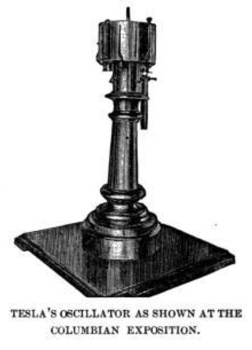
Free Electricity System
With funding from JP Morgan, Tesla designed and built Wardenclyffe Tower, a gigantic wireless transmission station, in New York in 1901-1902. Morgan thought the Wardenclyffe Tower could provide wireless communication across the world. However, Tesla had other plans.

Tesla intended to transmit messages, telephony and even facsimile images across the Atlantic to England and to ships at sea based on his theories of using the Earth to conduct the signals. If the project worked, anyone could have electricity by simply sticking a rode into the ground. Unfortunately, free electricity is not profitable. And this system could be incredibly dangerous for the global elite because it could profoundly change the energy industry. Imagine how different the world would be if society didn’t need oil and coal to function? Could the great world powers maintain control? Morgan refused to fund the changes. The project was abandoned in 1906 and never became operational.
The Flying Saucer
In 1911, Nikola Tesla told The New York Herald that he was working on an anti gravity “flying machine”.
“My flying machine will have neither wings nor propellers. You might see it on the ground and you would never guess that it was a flying machine. Yet it will be able to move at will through the air in any direction with perfect safety, at higher speeds than have yet been reached, regardless of weather and oblivious of “holes in the air” or downward currents. It will ascend in such currents if desired. It can remain absolutely stationary in the air, even in a wind, for great length of time. Its lifting power will not depend upon any such delicate devices as the bird has to employ, but upon positive mechanical action.” 
Tesla’s flying saucer was powered by free energy system at a time when the fledgling aviation and motor car industry depended on oil and petroleum. His invention met the same fate as his free energy system.
Improved Airships
Tesla proposed that electrically-powered airships would transport passengers from New York to London in three hours, traveling eight miles above the ground. He also imagined that airships might draw their power from the very atmosphere, never needing to stop for refueling. Unmanned airships might even be used to transport passengers to a preselected destination or for a remote aerial strike. He was never given credit for his invention. However, today, we have unmanned drones carrying out combat missions, supersonic airplanes that fly at amazing speeds and space shuttle technology that can circle the Earth in the upper atmosphere.

It was long suspected that the FBI literally stole all of his work, research, and inventions that he had in his possession when he died. This rumor has now been confirmed by recent, heavily redacted Freedom of Information Act requests released by the FBI.
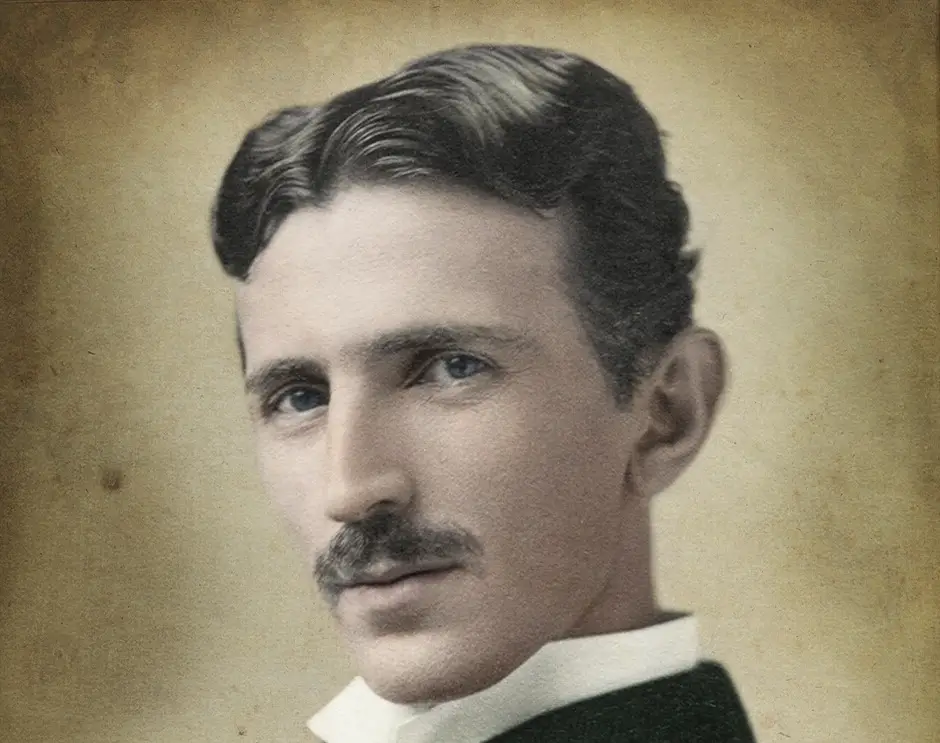
source:
Pot For Parkinson’s? The Scientific Evidence Is Compelling!
Despite the political controversy surrounding medical marijuana use in the country, research has begun to emerge showing that a component of this plant known as cannabidiol (CBD), and which does not have the controversial psychoactive properties associated with tetrahydrocannabinol (THC), may have a wide range of therapeutic applications, including treating conditions that are refractory to conventional drug-based approaches.
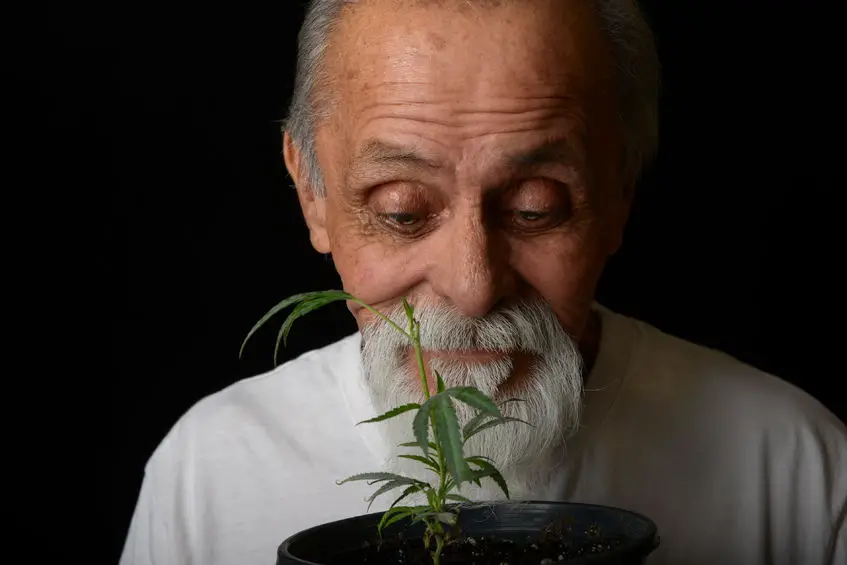 One such condition is Parkinson’s disease, to which there is, at present, no effective conventional treatment. In fact, the primary treatment involves dopamine increasing drugs that also increase a neurotoxic metabolite known as with 6-hydroxy-dopamine, and which therefore can actually accelerate the progression of the disease. This is why natural alternatives that are safe, effective, and backed up by scientific evidence, are so needed today. Thankfully, preclinical research on cannabidiol has already revealed some promising results, including two studies in animal models of Parkinson’s disease (PD) assessing its neuroprotective properties:
One such condition is Parkinson’s disease, to which there is, at present, no effective conventional treatment. In fact, the primary treatment involves dopamine increasing drugs that also increase a neurotoxic metabolite known as with 6-hydroxy-dopamine, and which therefore can actually accelerate the progression of the disease. This is why natural alternatives that are safe, effective, and backed up by scientific evidence, are so needed today. Thankfully, preclinical research on cannabidiol has already revealed some promising results, including two studies in animal models of Parkinson’s disease (PD) assessing its neuroprotective properties:
“In the first one, Lastres-Becker et al. (2005) showed that the administration of CBD counteracted neurodegeneration caused by the injection of 6-hydroxy-dopamine in the medial prosencephalic bundle, an effect that could be related to the modulation of glial cells and to antioxidant effects (Lastres- Becker et al., 2005). In the next year, Garcia-Arencibia et al. (2007) tested many cannabinoid compounds following the lesion of dopaminergic neurons in the substantia nigra with 6-hydroxy-dopamine and found that the acute administration of CBD seemed to have a neuroprotective action; nonetheless, the administration of CBD one week after the lesion had no significant effects (Garcia-Arencibia et al., 2007). This study also pointed to a possible antioxidant effect with the upregulation of mRNA of the enzyme Cu-Zn-superoxide dismutase following the administration of CBD.” [1]
In addition to these animal studies, the following three human clinical trials have been conducted to evaluate cannabidiol’s neuroprotective effects.
- A 2006 study published in Biological Psychology titled, “Dorsolateral Prefrontal Cortex N-Acetylaspartate/Total Creatine (NAA/tCr) Loss in Male Recreational Cannabis Users,” investigated the N-acetylaspartate to creatine ratios (NAA/Cr) in the brain of regular cannabis users through magnetic resonance spectroscopy (H1-MRS) to assess the neurotoxic and neuroprotective effects of cannabinoids present in the drug and found a strong positive correlation between CBD and NAA/Cr in the globus pallidus and putamen.[2] According to the study, “the globus pallidum is the region with the highest amount of CB1-receptors in the brain and the target of neurostimulation in patients with Parkinson’s disease, who developed a strong tremor. Our MRSI results support a positive effect of CBD on the putamen/globus pallidum region in cannabis use. Therefore, it may be promising to test a possible influence of the nonpsychotropic CBD in the onset of Parkinson’s disease.”
- A 2009 study published in the Journal of Psychopharmacology titled, “Cannabidiol for the treatment of psychosis in Parkinson’s disease,”[3] assessed the therapeutic use and neuroprotective effect of CBD in PD patients. The open label study was conducted with six patients with PD-related psychosis. They were administered CBD at doses ranging from 150 mg in the first week to 400 mg in the fourth and last week of treatment (doses were adjusted to optimize the clinical response). The study reported significant improvements in psychosis as well as in the total scores of a scale that measures general symptoms of PD (Unified Parkinson’s disease rating scale – UPDRS)
- A 2014 study published in the Journal of Psychopharmacology titled, “Effects of cannabidiol in the treatment of patients with Parkinson’s disease: an exploratory double-blind trial,” evaluated the effects of cannabidiol in Parkinson’s disease patients, dividing 21 patients into 3 groups of 7 receiving either placebo, cannabidiol (CBD) 75 mg/day or CBD 300 mg/day. Increases in well-being and quality of life were observed in the 300 mg/day groups versus the placebo groups. The researchers hypothesized that these improvements may have been due to cannabidiol’s “anxiolytic,” “antidepressant,” “anti-psychotic,” and “sedative” properties.
These results, taken together with the results from the animal models of PD, indicate that CBD may provide a drug alternative in PD patients. Additionally, a new study published in Toxicology In Vitro titled,”The neuroprotection of cannabidiol against MPP+-induced toxicity in PC12 cells involves trkA receptors, upregulation of axonal and synaptic proteins, neuritogenesis, and might be relevant to Parkinson’s disease,” makes the case for using cannabidiol in PD even more compelling by helping to illuminate some of the molecular mechanisms beneath its benefits.
The study found that cannabidiol protects against the neurotoxin known as MPP(+), which is widely believed to be responsible for the damage to the dopamine-producing cells in the substania nigra of Parkison’s patients, by preventing neuronal cell death and inducingneuritogenesis (a neuro-regenerative process for repairing damaged neurons). This mechanism was found to be independent of the neural growth factor (NGF) pathway, even though it involves NGF receptors. Cannabidiol was also found to increase the expression of axonal and synaptic proteins. The study concluded that CBD’s neuroprotective properties might be of benefit to Parkinson’s disease patients.
For additional research on how cannabis can contribute to mitigating neurodegenerative diseases read our article, “Marijuana Compound Found Superior To Drugs For Alzheimer’s,” and peruse the cannabis research database on GreenMedInfo.com. Also, for an extensive set of data on natural interventions for Parkinson’s disease, view our database on the topic: Parkinson’s disease research. Finally, peruse an extensive list of foods, spices, and natural substances that have neuritogenic properties here.
References
[1] Chagas MH, et al. J Psychopharmacol. 2014 Nov;28(11):1088-98. doi: 10.1177/0269881114550355. Epub 2014 Sep 18. Effects of cannabidiol in the treatment of patients with Parkinson’s disease: an exploratory double-blind trial.
[2] Hermann D, Sartorius A, Welzel H, et al. (2007) Dorsolateral prefrontal cortex N-acetylaspartate/total creatine (NAA/tCr) loss in male recreational cannabis users. Biol Psychiatry 61: 1281-1289.
[3] Zuardi AW, Crippa JA, Hallak JE, et al. (2009) Cannabidiol for the treatment of psychosis in Parkinson’s disease. J Psychopharmacol 23:979-983.
Source:
About The Author
Sayer Ji is founder of Greenmedinfo.com, on the Board of Governors for the National Health Federation, and Fearless Parent, Steering Committee Member of the Global GMO Free Coalition (GGFC), a reviewer at the International Journal of Human Nutrition and Functional Medicine.
Sorry Monsanto: Organic Food Demand Is Absolutely Exploding
You can attribute this change in market demand to education. You can attribute it to the mass awakening happening around the planet. But either way, you can’t argue with the numbers. Eating organic is no longer ‘fringe’ or something done solely by health-nuts and athletes, hippies, and paranoids. In fact, consumer demand for organic food is seeing double digit growth year over year, and it doesn’t show signs of stopping.
Over 20,000 stores now offer organic food products. A report has shown that in 2012, more than $28.4 million was spent on healthful organic food, and that number has grown since the report published such findings. According to Nutrition Business Journal, organic food sales will reach a startling $35 billion this year. For those of us who don’t take our health for granted, this is just the beginning of a food revolution.
We’re eating better in every category of food, too, not just organic apple and oranges. People are boycotting toxic food-producing companies faster than you can say ‘lawsuit’ as they realize we’ve been lied to. People now know that something made in vats with chemical additives or spliced and diced with GMOs is anything but ‘natural.’
We are turning away from companies like Kellogg’s and Pepsi-Co, Coca-Cola, and Kraft to companies that we can actually trust – companies that don’t sell us non-food and call it food.
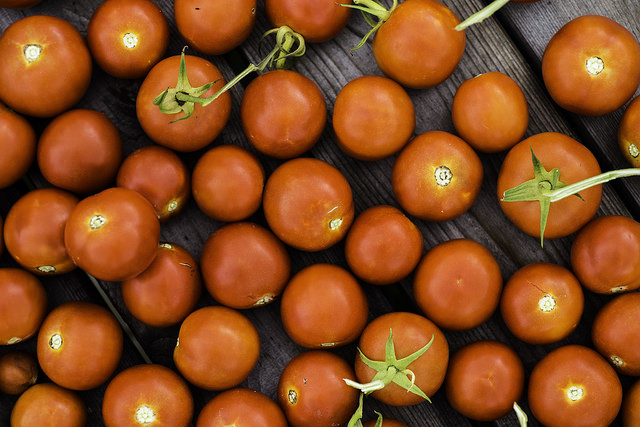
While fresh fruits and vegetables leading the way in organics for the past three decades, and accounting for 43% of U.S. organic food sales in 2012, dairy, bread, packaged foods, snack foods, meat, poultry, seafood, and even condiments are seeing an up-turn in organic sales.
For now, individuals are purchasing their organic foods primarily through conventional and natural food supermarkets and chains, according to the Organic Trade Association (OTA), but this is also changing as more people turn to food co-ops and even neighbors for fresh, organic food.
We’ve come a long way since the organic food movement’s beginnings. Yes, our grandparents and great-grandparents just grew… food. They didn’t even call it organic, though they often didn’t use pesticides or herbicides, and certainly not petroleum-based or chemical fertilizers.
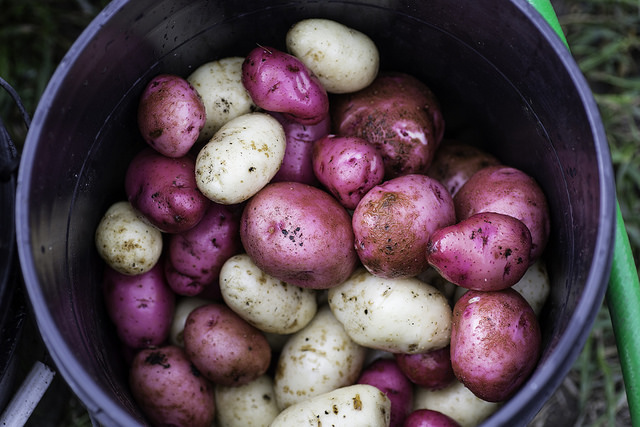
Indeed, growing our own food is becoming an absolutely essential part of our collective future.
In the same way that petrochemical companies don’t want to see the impending evolution of solar and wind power, Big Ag doesn’t want to accept what is happening with our food consciousness. We know better now, and so we ask for better. Our wallets are truly determining the future food landscape.
Report On Marijuana Overdose In 2015
Marijuana legalization has been the talk of North America for years now. It’s arguable that one of the biggest campaign promises made by Canada’s new Prime Minister, Justin Trudeau, was his goal to legalize cannabis countrywide. In the US, cannabis is legal in some form in 23 states, and with that we see a staggering number we should all consider. The number of Americans who fatally overdosed on cannabis in 2015 was: 0.
No one. Not a single person.
This of course is a huge increase from the year before which was also, zero. So it begs the questions: why is marijuana illegal? And why are other substances like alcohol and pharmaceuticals legal, yet they actively contribute to killing people in large numbers?
Hemp and cannabis became illegal back in 1937 for an all too common reason, it threatened the businesses of powerful people. You can grab the full ridiculously political story on that in an article I wrote about hemp and how they used cannabis to outlaw it back in 1937.
Legal Dangerous Substances
I’m not going to be one to say that it’s the substance’s fault all the time, because it’s not. I’m also not going to say whether things need to be legal or illegal right now. Instead I’m going to focus on the reality of what is happening.
Alcohol is legal, and very accessible in our society. It’s seen as a good time and something we can drink daily to relax after work. This year, the substance has aided in killing Americans at a rate that hasn’t been seen in roughly 35 years according to the Washington Post.[1] Reports state that more than 30,700 Americans died from alcohol-induced causes in 2015. This number does not include those who died as a result of alcohol related deaths like drunk driving or other accidents. If it did, the number would be close to 100,000.
According to a 2006 report in American Scientist, “alcohol is more lethal than many other commonly abused substances.” The report goes on to also mention:
Drinking a mere 10 times the normal amount of alcohol within 5 or 10 minutes can prove fatal, whereas smoking or eating marijuana might require something like 1,000 times the usual dose to cause death.
But it may not be fair to say that marijuana doesn’t have downsides because clearly it does. It’s speculated that it can cause brain developmental challenges in people under the age of 25 who smoke regularly, as it affects grey matter and it can of course also lead to drugged driving which can also be dangerous.[3] But are the dangers as bad as alcohol? And can we truly compare therapeutic values? What about when we look at pharmaceuticals?
Here are 2 graphs from the National Institute on Drug Abuse:


Looking at reported cases in the US, we see that prescription drugs prescribed by a doctor, as well as pain reliever addictions, have led to a combined 42,000 or so deaths in 2014. This is even more than alcohol! Strictly from a statistics point of view, prescription drugs, while having value in other areas, come with a great number of downsides and also happen to be the biggest business. Is there a conflict of interest in handing out these drugs when the ability to make money is attached? Do more drugs than are needed enter our society? The obvious answer is yes, when you look at how often drugs are not only wrongly prescribed, but are also the first option to fix something fickle before we even look at the potential behind lifestyle changes.
Public Demand
Although the public in North America in general seems to be pushing for the legalization of marijuana, it is still opposed heavily. Some groups include the pharmaceutical lobby, who would lose big in profits, as well as police unions who would lose federal budget for the war on drugs. You can begin to see our society runs less on common sense and more on political and monetary rigidity with groups all working against each other in their own interest.
But to be honest, legalization is a whole other topic, because I believe it is not quite as good as people hype it up to be. Some challenges that would come in include who controls marijuana growth, the quality of what is made available, and the manipulation of that product.
Interestingly enough, among all 2016 presidential contenders, Democratic hopeful Sen. Bernie Sanders (I-Vt.) is the only one who outright supports the legalization of marijuana. As of now the substance is classified as a Schedule 1 drug, up there with heroin and LSD. (which is a whole other topic of discussion)
Final Note
Entirely blaming a substance for the cause of people’s deaths and addictions is not an effective way of looking at the problem, nor is regulation of those substances going to be the answer in helping people. We have a large disconnect in our society in helping people with mental, emotional, and physical challenges and we are obsessed with isolating issues into black and white when most of the time they are not. I believe many of these deaths are a sign of other challenges in our society that we are opposed to looking at such as a lack of enjoyment and fulfilment in our jobs, not doing what we love, not processing our emotions, treating illness as purely physical and so forth. Until we can address many of these factors and implement solutions, we will always be creating addicts who find substances to get addicted to in order to compensate for other areas of their lives. This isn’t to say things like alcohol and prescriptions drugs are good and therefore should be so easily available to people, but more so to suggest that we all look at the full picture.
Sources:
2. https://www.americanscientist.org/libraries/documents/200645104835_307.pdf
3. http://www.thecannabist.co/2014/11/17/marijuana-young-brain-study/23251/
H/T: http://www.huffingtonpost.com/entry/marijuana-deaths-2014_56816417e4b06fa68880a217
Study Shows Meditation Helps Reduce Racial Bias
by Jill SuttieThis article was originally published by Greater Good in Action.
The shooting death of Michael Brown in Ferguson, Missouri, and the choking death of Eric Garner in New York City have shaken American society to its core, triggering waves of protests. Most Americans seem to feel that racism played a role in these deaths-that they never would have happened if the victims had been white.
While we struggle to make sense of it all, we may also wonder what we would have done if we were in those same situations, as either the unarmed victims or the police. Would we have acted with more caution? Might we have been subject to the same biases that led to these tragedies? And could our conscious brains have overridden any hidden biases we hold?
A new study suggests that, yes, it can be done-and the key might be cultivating nonjudgmental, moment-to-moment awareness of thoughts and feelings.
Research has shown that most of us make split second assumptions about people based on superficial differences in appearance. Scientists have learned to study these unconscious biases using a test called the Implicit Assumptions Test or IAT, which measures how quickly people associate negative or positive words-like “bad” or “good”-with photos of people representing different social groups-such as African Americans or the disabled-flashed upon a screen. Prior studies have shown that white participants taking the IAT tend to have quicker response times when pairing words representing “good” characteristics with white faces and words representing “bad” characteristics with black faces, reflecting their biases about blacks and whites.
This research has real-world implications. Negative associations have been shown to affect how quick study participants are to shoot at a black suspect versus a white suspect when presented with a simulated experience that involves making that decision under ambiguous conditions or time constraints-the kind of decision police officers repeatedly face in their work. Another study found that even trained police officers, when primed to see blacks as dangerous under simulated conditions, are more likely to shoot blacks than whites, whether or not the suspect had a gun.
Interestingly, studies have found that implicit associations, though largely unconscious, are malleable; these studies have identified ways to mitigate negative associations. For example, one study has shown that presenting whites with images of exemplary figures from black history-such as Martin Luther King, Jr.-reduces their knee-jerk negative evaluations of blacks and their knee-jerk positive evaluations of whites. In addition, some studies have suggested that putting people in a positive mood-even just getting them to smile-can interrupt negative implicit attitudes, while other studies suggest that cross-racial friendships also may attenuate implicit biases.
Now, a newly published study by researchers Adam Lueke and Brian Gibson of Central Michigan University suggests another way to impact implicit assumptions: mindfulness.
In their study, 72 white college students were measured on their levels of implicit bias of blacks and the elderly using the IAT. Some participants then listened to a 10-minute mindfulness meditation in which they were instructed to “become aware of bodily sensations (heartbeat and breath) and fully accept these sensations and any thoughts without restriction, resistance, or judgment”; other participants listened to a recording about natural history, voiced by the same narrator. Afterwards, the two groups of students were evaluated on their levels of mindfulness and then reassessed on their levels of implicit bias using the IAT.
Results showed that people who listened to the 10-minute mindfulness recording demonstrated less implicit bias against blacks and old people on the race and age IATs than individuals who listened to the other 10-minute recording. In other words, the mindfulness intervention decreased students’ automatic biases against blacks and older adults.
Why might that be? Mindfulness has been shown before to interrupt the link between past experience and impulsive responding. For example, mindfulness training has been shown to help overeaters decrease the automatic attractiveness of fatty foods, allowing them to resist eating those foods when the foods are presented to them. Mindfulness also encourages a kind of open awareness that can make one more attuned to what’s actually occurring in the present moment-hypothetically allowing one to filter out preconceptions from actual experience, and thereby decrease bias.
One interesting consideration is that in the present study the mindfulness training was very brief and non-specific-in other words, the authors did not specifically try to train the participants in bias-reduction. This leads the authors to suggest that brief mindfulness training may be a good substitute for-or may augment-more traditional anti-bias training.
Could mindfulness training for police officers have made a real difference in Ferguson or New York? It’s hard to say. Even the authors of this study resist equating mindfulness training and bias reduction with decreased racist behavior in the real world, though their lab is currently trying to assess whether or not mindfulness could have that impact.
Still, if such a brief mindfulness intervention can reduce biases, it makes a strong case for teaching mindfulness to youth-and adults as well. If we could all learn to keep some of our knee-jerk biases in check, perhaps we might stand a better chance of preventing future Fergusons from happening again.

















